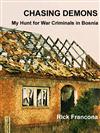 |
| Barrel bombs aboard an Mi-8 helicopter |
 |
| Syrian air force crewman ignites barrel bomb fuse with a cigarette |
The Syrian air force has developed a crude, but effective air-delivered munition referred to by the Syrian people who it is dropped on as al-barmil (the barrel), or al-barmil TNT. It is mostly delivered by helicopter, usually the Mi-8 (HIP C) and Mi-17 (HIP H). The sound of helicopter rotor blades causes panic and terror.
There are several versions of the barrel bomb, probably depending on which air base prepares them. They all include the same basic components. Start with a cylindrical object, be it a large-diameter pipe, a used artillery shell, or the basic oil drum. Fill the object with TNT or other explosive, some oil and shrapnel. The shrapnel used includes pieces of rebar, nuts and bolts, nails and ball bearings. The explosion causes great damage to soft structures - houses, apartment buildings, commercial areas - in addition to the extreme human casualties.
The bombs, in reality improvised explosive devices, are fitted with a fuse that appears to be nothing more than detonator cord, and is ignited with a match, lighter or cigarette (as seen in video below). After the fuse is lit, the device is pushed out the back of the helicopter. From the videos I have seen, there does not appear to be much aiming - the crewmen push the barrel out over a city or village. The helicopters remain fairly high - I estimate the altitude of the video below at about 10,000 feet - to remain above the effective altitude of the anti-aircraft artillery and shoulder-fired surface-to-air missiles in the hands of the Free Syrian Army. Here is a video clip of an Mi-8 helicopter dropping barrels in what I believe to be northeastern Syria the area of Dayr al-Zawr. This is what a barrel bomb looks like from the ground. In this clip, two barrel bombs are dropped on Busra al-Sham in southern Syria. You can here the terror in the narrator's voice. Busra al-Sham is home to one of the world's best-preserved Roman cities.
This is what a barrel looks like after it has hit the ground, but not detonated. Note the shrapnel in the lower frame.
Carrying barrel bombs inside a helicopter is risky business, especially if the helicopter is flying within the effective range of antiaircraft weapons. I believe this helicopter may have been carrying these TNT-laden barrel bombs when it was hit by ground fire.
The Syrians have developed what appears to be an effective weapon that incites panic and fear on its intended targets. We must not forget that these random bombings are directed at their own people.


.jpg)

